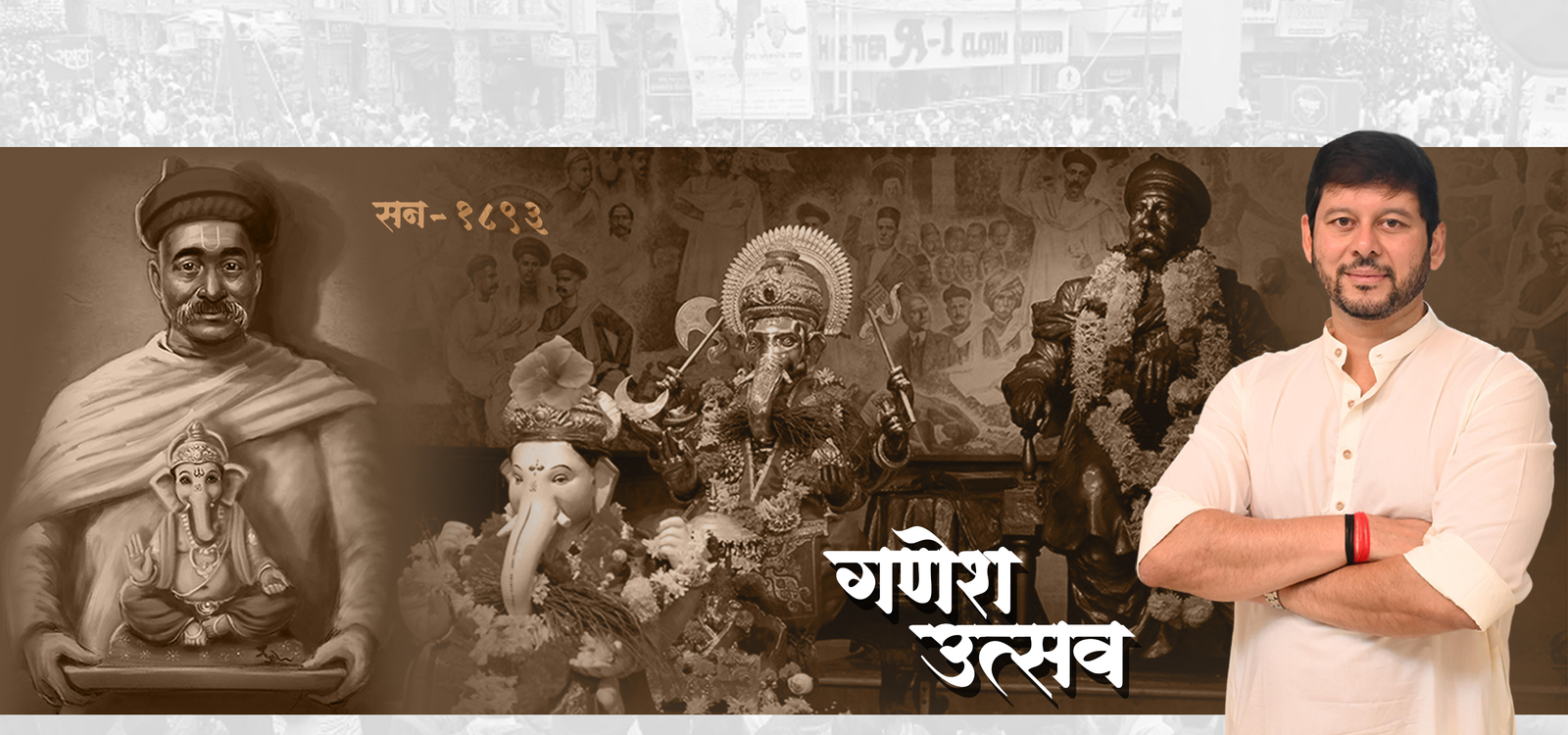

Keasri Wada Ganpati
Ganesh Utsav
Dr. Tilak carries forward the cultural significance of Ganesh Utsav, initiated by Lokmanya Tilak, fostering unity and community spirit.
Visiting Kesari Wada Ganpati offers not only a spiritual experience but also a glimpse into India's rich history and the legacy of Lokmanya Tilak.
Ganesh Utsav
Kesari Wada Ganpati: A Legacy of Devotion and National Pride
Nestled in the heart of Pune, Kesari Wada Ganpati stands as a revered symbol of faith, history, and nationalistic fervour. Established in 1894 by the great nationalist leader Lokmanya Bal Gangadhar Tilak, this sacred Ganpati holds the prestigious position of Pune’s fifth ‘Manacha Ganpati’ (Respected Ganpati).
Originally, the idol was enshrined at Vinchurkar Wada, the ancestral home of the Tilak family. However, in 1905, it was relocated to Gaikwad Wada, which later became known as Kesari Wada—a place that not only witnessed India’s freedom struggle but also became a powerhouse of revolutionary ideas and journalistic excellence.
Kesari Wada: The Heart of a Movement
Kesari Wada derives its name from Kesari, the influential Marathi newspaper founded by Tilak, through which he ignited the flames of India’s independence movement. Alongside ‘Kesari’, Tilak also ran an English newspaper, ‘The Maratha’, both of which played a crucial role in awakening nationalist sentiments among Indians.
Today, Kesari Wada serves as a historical treasure trove, housing priceless memorabilia of Lokmanya Tilak—his writing desk, original letters, rare documents, and historical artefacts. One of the most significant relics preserved here is the first Indian national flag, unfurled by Madame Bhikaiji Cama in 1907 at the International Socialist Congress in Germany, symbolizing India’s struggle for independence.
Ganeshotsav at Kesari Wada: A Unique Tradition
During the grand Ganeshotsav festival, Kesari Wada Ganpati draws thousands of devotees, continuing the tradition started by Tilak himself. Unlike many other mandals, Kesari Wada installs two Ganesh idols—one that remains permanently enshrined and another that is specifically worshipped during the festival before being immersed on the tenth day.
Tilak initiated public Ganesh celebrations not only as a religious event but as a means of unifying Indians against British rule, fostering a sense of collective identity and national pride. Even today, the Ganeshotsav at Kesari Wada is not just a religious gathering but a living testament to India’s glorious history, cultural richness, and the visionary leadership of Lokmanya Tilak.
A visit to Kesari Wada Ganpati is not just an act of devotion—it is a journey through India’s past, a tribute to its freedom fighters, and a celebration of the indomitable spirit of the people.
Memorable Moments of Ganesh Utsav
























